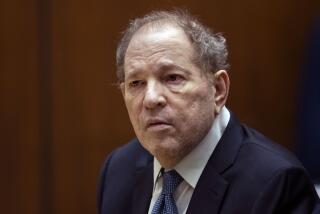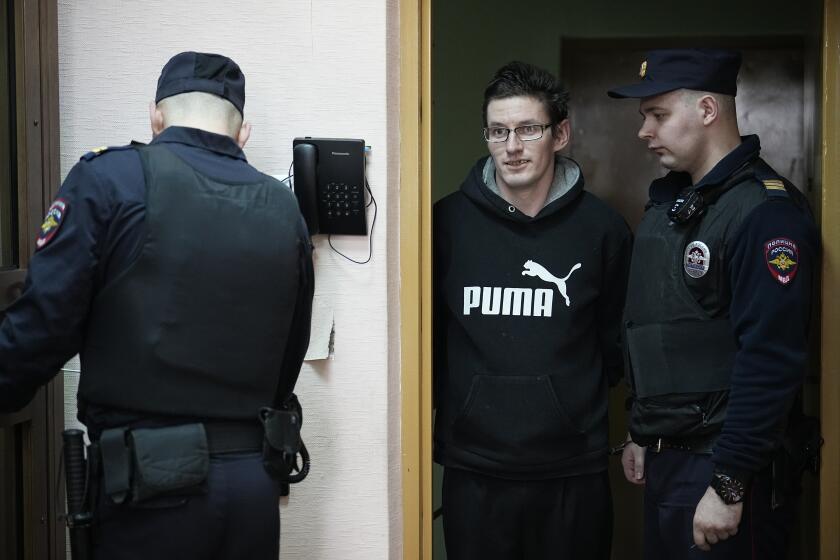Key designer of nuclear weapons
Harold Agnew, a leading figure of the nuclear age who helped design the first atomic bomb as a member of the Manhattan Project, led efforts after World War II to make the weapons more secure and championed the development of nuclear power during a prodigious career that included nearly a decade as director of the Los Alamos National Laboratory, has died. He was 92.
Agnew died Sunday while watching football at his home in Solana Beach, Calif., his family said in a statement released by Los Alamos. He had chronic lymphocytic leukemia.
In a career that spanned more than 50 years, Agnew held a unique vantage point on the nuclear era. A physicist who trained under Enrico Fermi, he helped build the world’s first reactor, flew alongside the Enola Gay when it dropped its devastating load on Hiroshima and headed Los Alamos’ weaponry division during a prolific postwar period when the lab developed many new weapons, including the thermonuclear warhead for the Minuteman intercontinental ballistic missile.
“Harold was an innovator,” said Los Alamos National Laboratory historian Alan Carr. “The vast majority of weapons in the nuclear stockpile were designed at Los Alamos and Harold had a hand in designing most of them -- I’d say about 75%.”
Agnew, in an interview with the BBC in 2005, said he considered his seminal contribution to building the U.S. nuclear arsenal to be “my legacy.” He remained an unapologetic hawk throughout his life, even after many of the leading scientists of the early nuclear era, including Albert Einstein and J. Robert Oppenheimer, expressed moral qualms about the bomb and its consequences.
“My feeling towards Hiroshima and the Japanese was, they bloody well deserved it,” he told The Times in 1984. “The whole damn thing has been turned around as if we were the bad guys.”
The blunt-spoken scientist had no qualms about advancing his views in Washington. He advised President Carter against a comprehensive ban on nuclear testing in 1978, arguing that it would not only halt the development of new weapons but weaken the deterrence value of the existing arsenal. The White House ultimately abandoned the idea of a test ban.
At the same time, Agnew spearheaded efforts to substantially improve nuclear security. In the early 1960s, during an inspection of nuclear caches in Europe, he discovered that the only security on an armed U.S. plane was a lone American soldier with a rifle and no training on how to respond to a threat. Under Agnew’s tutelage, scientists at Los Alamos devised a coded safety system to prevent arming a nuclear weapon without proper authorization.
Agnew oversaw the installation of the safety system on all nuclear weapons in Europe as scientific advisor to the Supreme Allied Commander in Europe from 1961 to 1964.
After the Cold War ended, he was instrumental in molding a new mission for Los Alamos, overseeing the creation of programs unrelated to defense, including projects involving nuclear energy, basic science and biomedical research.
During his nine-year tenure, Los Alamos also acquired the first Cray supercomputer, developed an underground test containment program and trained the first group of International Atomic Energy Agency inspectors.
“It was his vision -- decades ago -- that recognized that national security science brings value to a broad spectrum of breakthroughs. Los Alamos and the nation will be forever in Harold’s debt,” Los Alamos National Laboratory director Charlie McMillan said in a statement.
Harold Melvin Agnew was born in Denver on March 28, 1921. He earned a degree in chemistry from the University of Denver in 1942 and joined a research group headed by Fermi, the Italian-born physicist whose work led to the first controlled nuclear chain reaction in Chicago on Dec. 2, 1942. “The [radiation] counter would get going faster and faster,” Agnew recalled in The Times about watching the reaction. “That was sort of exciting, but I really didn’t understand what the implications were.”
The implications became clearer when he followed Fermi to the Manhattan Project, the top-secret government program at Los Alamos, N.M., where the sole objective was to develop the atomic bomb.
Agnew was a member of the project from 1943 to 1946. On Aug. 6, 1945, he was aboard a B-29 flying parallel to the Enola Gay when the bomb was unleashed over Hiroshima. With fellow physicists Luis Alvarez and Lawrence Johnson, he measured the yield or force of the explosion using parachutes equipped with blast sensors. The team took turns observing the mushroom cloud through a tiny window. Agnew had brought along a 16-millimeter movie camera to take rare footage of the horrific event.
Eighty thousand people died in the explosion and thousands more perished later from radiation and other injuries. An additional 60,000 to 80,000 died as a result of the bombing of Nagasaki three days later.
After the war, Agnew earned his master’s and doctorate from the University of Chicago and returned to Los Alamos in 1949. He continued to work on weapon development while serving as a New Mexico state senator, from 1955 to 1961. He was leader of the weapons division when he was named the director of the 7,000-employee lab in 1970.
In 1979, he left Los Alamos to become president of the San Diego company General Atomics, where he steered the innovation of new reactors, including the helium-cooled reactor.
Agnew, who retired in 1985, is survived by a son, John; a daughter, Nancy Chapman; four grandchildren and three great-grandchildren.
Although he never had regrets about his role in launching the U.S. into the nuclear age, Agnew said he would require every world leader to witness an atomic blast every five years while standing in his underwear “so he feels the heat and understands just what he’s screwing around with,” he told The Times, “because we’re approaching an era where there aren’t any of us left that have ever seen a megaton bomb go off.
“And once you’ve seen one, it’s rather sobering.”
--
More to Read
Start your day right
Sign up for Essential California for news, features and recommendations from the L.A. Times and beyond in your inbox six days a week.
You may occasionally receive promotional content from the Los Angeles Times.







